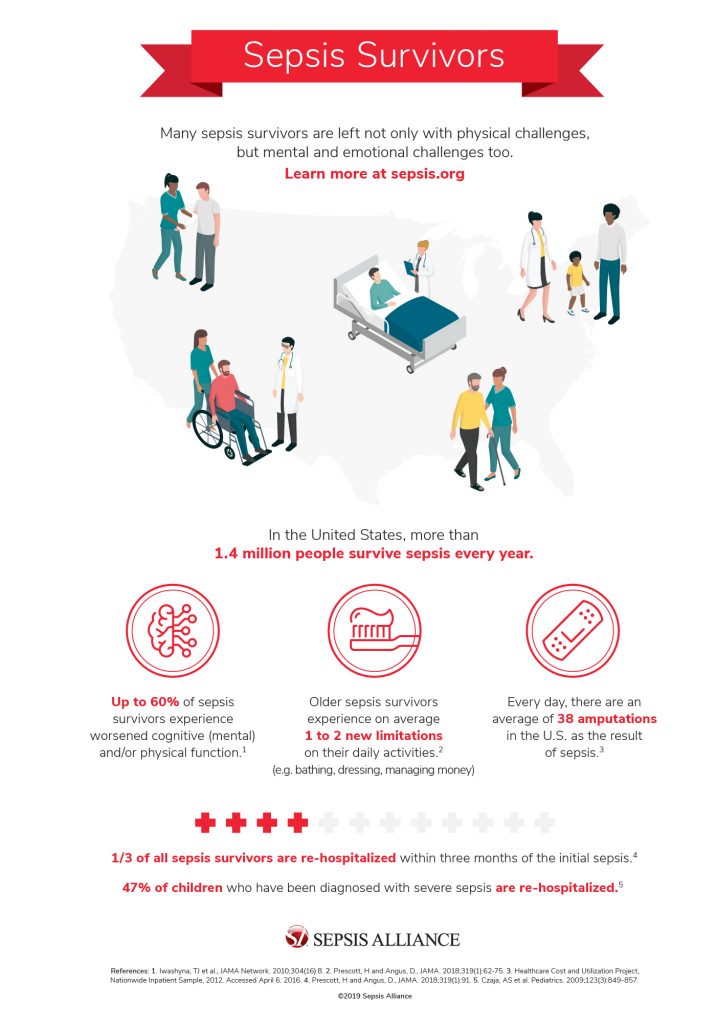Post-Sepsis Life: A Challenge for Many Survivors and their Loved Ones
February 13, 2019
Your doctor has said you can go home. Your nurse gave you the discharge instructions and asked if you have any questions. Your ride is ready to take you home. You’re happy to be leaving, so why do you feel like there’s still something wrong?
Every year, over 1 million people in the United States survive sepsis or septic shock. But unlike other conditions that healthcare providers understand, such as a broken bone or diabetes, sepsis is still a great unknown. It can leave serious long-term problems that aren’t recognized as being connected with sepsis. Up to 60% of sepsis survivors leave the hospital with physical or cognitive (mental) challenges – post-sepsis syndrome. Aside from obvious physical challenges, like amputations, many survivors live with chronic pain and exhaustion, frequent illnesses, depression, anxiety, and more. And most people who live with these issues think they’re alone.
Did you know that older adults who survive sepsis experience – on average – one to two new limitations once they’ve been discharged from the hospital? These limitations can range from not being able to pay the bills to having difficulty getting dressed or making a meal. Many children who were treated for septic shock have trouble returning to grade level or resuming their previous level of physical activity, despite appearing fine.
People in the U.S. are becoming more familiar with the word sepsis and what it is. According to the Sepsis Alliance annual survey, up to 65% of adults in the U.S. had heard of sepsis in 2018, compared with only 44% four years ago. But as we make inroads into helping people understand that sepsis is a medical emergency, much still needs to be done to help those who survive. Given that one-third of all sepsis survivors end up back in the hospital within three months of their discharge, post-sepsis education is vital.
So, what can you do? Sepsis survivors and their loved ones share their stories in the Faces of Sepsis, they give talks using the Sepsis 911 Community Education Presentation, and they hand out sepsis materials, including the TIME™ card at work, school, and play.
What is Sepsis Alliance doing? We have launched Sepsis Survivor Week, to be held each year during the second week of February. We’ve beefed up our survivor resources. We even have letters addressed to doctors, teachers, coaches, and daycare providers that discuss the issues that some sepsis survivors face. And we’re encouraging survivors to talk about sepsis through their social media. Spreading the word, using the hashtag #SepsisSurvivor, helps other survivors know that they are not alone.






























